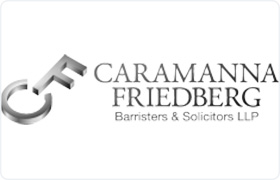Parkhill Felony Lawyer, Ontario, page 4
Sponsored Law Firm
-
 x
x

Click For More Info:
-
Caramanna, Friedberg LLP
700 Bay St 405, Box 144 Toronto, ON M5G 1Z6» view mapCriminal Defense Law Defending Your Rights
Caramanna, Friedberg LLP provides comprehensive legal advice and vigorously protects the rights of clients facing criminal charges and regulatory offences.
416-924-5969
Not enough matches for Parkhill Felony lawyer.
Below are all Parkhill lawyers.
Leo Joseph Terrance Belanger
General Practice
Status: In Good Standing *Status is reviewed annually. For latest information visit here
Linda Lucy Creaghe
General Practice
Status: Inactive *Status is reviewed annually. For latest information visit here
Lisa Marie Walters
General Practice
Status: In Good Standing *Status is reviewed annually. For latest information visit here
Malcolm Bennett
General Practice
Status: In Good Standing *Status is reviewed annually. For latest information visit here
Mark Barclay Coulston
General Practice
Status: In Good Standing *Status is reviewed annually. For latest information visit here
Michael Gregory Forrester
General Practice
Status: In Good Standing *Status is reviewed annually. For latest information visit here
Michael Gibson Blackburn
General Practice
Status: In Good Standing *Status is reviewed annually. For latest information visit here
Murray Patrick Austin
General Practice
Status: In Good Standing *Status is reviewed annually. For latest information visit here
Nan Ellen Brooks
General Practice
Status: Inactive *Status is reviewed annually. For latest information visit here
Paul James Hendrikx
Corporate, Environmental Law Other
Status: In Good Standing *Status is reviewed annually. For latest information visit here
 Matthew Friedberg Toronto, ON
Matthew Friedberg Toronto, ON AboutCaramanna, Friedberg LLP
AboutCaramanna, Friedberg LLP Practice AreasExpertise
Practice AreasExpertise